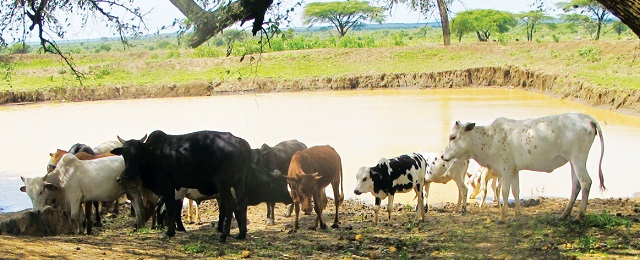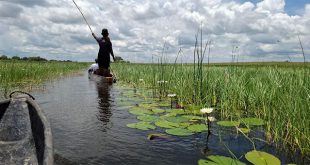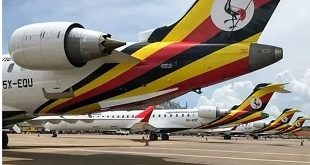
Experts look for solutions underground
Kampala, Uganda | RONALD MUSOKE | What should East African countries do when their rivers and lakes dry up, as is predicted to happen in the next 20 years?
Experts who recently met in Entebbe, Uganda, for the Second Water Forum of the IGAD region said this is the time to look at underground water resources.
“We (should) look at underground water because it rarely runs out,” said Callist Tindimugaya, the commissioner for water resources planning and regulation, at Uganda’s Ministry of Water and Environment.
Tindimugaya said finding new water resources underground is the only sure way to avoid fights over water among regional states.
“Having multiple sources of underground water means reducing scarcity. Where there is no scarcity, conflict is avoided,” he said.
The meeting was organized by the Intergovernmental Authority on Development (IGAD); a regional economic bloc of eight countries that include; Uganda, Kenya, Somalia, South Sudan, Ethiopia, Sudan, Djibouti, and Eritrea and it ran between Jan. 25-27.
The forum was held under the theme, “Groundwater for resilience in the IGAD region” and attracted over 300 in-person and online participants; including policymakers from member states, UN agencies, development partners and the academia.
The IGAD Executive Secretary, Workneh Gebeyehu, told the meeting that the climate forecasts that the IGAD Climate Prediction and Application Centre has been sending to his office are worrying.
He said, according to the forecasts, the region which is about 5.2 million Sq. km large is set to heat up twice as fast as the rest of the world over the next two decades. The projections are worrying Gebeyehu because the IGAD region is already “water stressed’; meaning that the region has far less water than its citizens demand.
With the exception of Uganda and South Sudan which have abundant surface water, other countries within IGAD are either arid or semi-arid and depend on underground water resources for survival.
“It is worrying that the quantity and quality of surface water resources is diminishing in some parts of our region,” he said. Gebeyehu wants this to change. He told delegates that the “water gap” in the IGAD region is bigger than the “digital divide.” “It is easier to find a Smartphone than a water source,” he said.
According to him, a lot of effort has been made to bring important telecommunications infrastructure to the remotest parts of the region, but at the same time, not enough effort has been made to bring similar life-saving water infrastructure to vulnerable communities.
He said the IGAD region has been affected by disagreements over water not only at inter-communal level in the borderlands, but at a regional level over riparian water rights along the Nile, whose sources are located in two of the IGAD member states.
“Water is the new oil and is set to increasingly become the source of new and future conflicts,” he said. But, he told delegates, if groundwater is harnessed, it can contribute to bringing peace and security in a region that is already conflict prone.
Conflict-prone IGAD
The eastern African region is periodically affected by climate change extremes such as droughts during which periods some countries resort to using very expensive water services provision methods such as water trucking. Poor rural communities suffer most. Many lose their livestock.
Most hit are the fragile border areas of eastern Ethiopia/western Somalia, southern Somalia/northeastern Kenya, western Ethiopia/eastern Sudan, southern Ethiopia/northern Kenya, southern South Sudan/ northwestern Kenya/northern Uganda as well as northeastern Uganda and northwestern Kenya. The pastoralists who inhabit this expansive territory often fight over scarce water resources.
A study done in 2021 by the IGAD Conflict Early Warning Mechanism (CEWARN) established that there is a strong relationship between poor vegetative cover due to lack of water and the incidence of conflict in the IGAD region. It concluded that a 10% improvement in vegetation could actually reduce the chance of armed conflict by 21% and human death by 17.3%.
Dr. Mark Smith, the Director General of the International Water Management Institute (IWMI) enumerated how water scarcity underlies local level as well as cross-border conflicts, cattle rustling, and armed clashes in the region.
Smith noted that while the mechanisms that drive these conflicts are quite complex there is general agreement that a well-planned groundwater development programme through transboundary cooperation could contribute to stability and peace in the region by helping secure water for the needy population and livestock development.
However, Prof. Seifu Kebede Gurmessa, the Vice President of the International Association of Hydrogeologists who also doubles as professor of hydrogeology at the University of Kwa Zulu Natal noted that groundwater is not only about drilling boreholes to supply communities with underground water.
“There are issues of aridity, complex geology, salinity and climate change, and the groundwater option is not straightforward. IGAD is unique in many cases,” he said.
Dr. Zebene Lakew, the groundwater study director and steering committee member for the IGAD Groundwater project representing Ethiopia noted that sustainability will come from knowing the resource, developing it and more importantly, monitoring it. “You cannot manage your bank account without knowing how much money is on the account,” he said.
Billions of litres of water under our feet
Water experts in the region have already mapped up to 17 transboundary aquifers or water-bearing rocks. Buoyed by one project, the Ethio-Djibouti water transfer project which is already showing how the precious resource could potentially be used as a source of regional cooperation, the Entebbe forum explored the role groundwater could play in adaptation to climate change and in building resilience. Examples, such as the “Fundi Fix model” in water-stressed areas in the Turkana area in Kenya, were discussed.
Stressing Kenya’s vulnerability and water insecurity caused by erratic rainfall patterns and the influence of climate change, Kenyan officials at the forum said more research and investment is now needed to identify and understand groundwater aquifers to improve capacity for their monitoring and assessment.
So far, little is understood about these aquifers and many geology experts attending the Entebbe forum mentioned several challenges that still hinder the exploitation of groundwater within the IGAD region.
Many talked about the difficult hydrology and hydrogeology of the region and the need for capacity building and technological and institutional innovations. One particular example is the huge groundwater reservoir that the Kenyan government said scientists had discovered in 2013 in the arid Turkana region in northern Kenya.
Scientists said at the time the discovery of the two aquifers were holding some 250bn cubic metres of water and could supply water to the country for 70 years. The announcement brought joy to the drought hit region. But a decade later, little progress has been made and the pastoral communities of northern Kenya continue to grapple with water scarcity problems.
A groundwater expert told The Independent that more research needs to be done to enable a more accurate assessment of the aquifers, including the aquifers found in 2013 in the Turkana Basin and Lotikipi Basin using satellites and radar technology.
Fred Mwango, the team leader and regional water expert at IGAD Secretariat told The Independent in an email, that it appears the “stated huge amount of water from the Turkana Basin seems to have been exaggerated and therefore the discovery requires being technically confirmed using different methods.”
Mwango said IGAD countries have never prioritized groundwater assessment/studies in order to create knowledge on the resource. He said there are two main factors why groundwater resources have not been developed up to now.
One is the technical aspects required to develop the resource. The other is the lack of financial resources to undertake further investigations to confirm the availability of these huge groundwater resources and subsequently develop the resource.
Mwango told The Independent that considering the difficult hydrology and hydrogeology of the region, there is need for capacity building and technological and institutional innovations. He noted that when it comes to knowledge, capacity in the region is not even. “Some countries have more capacity than others,” he said.
IGAD has understood this problem and since 2017 has been undertaking groundwater studies under the Horn of Africa Groundwater Initiative Project supported by the World Bank. At the Entebbe meeting, the IGAD member states re-affirmed their commitment to intensify transboundary cooperation by sharing data and information and creating a conducive institutional environment for future regional cooperation.
Mwango said it was encouraging that the IGAD had for the first time come up with a forum focusing purely on groundwater. John Mulimba, Uganda’s minister of state for regional affairs said IGAD is appreciative of the World Bank’s current support in form of the groundwater study that it is currently undertaking.
****
 The Independent Uganda: You get the Truth we Pay the Price
The Independent Uganda: You get the Truth we Pay the Price





